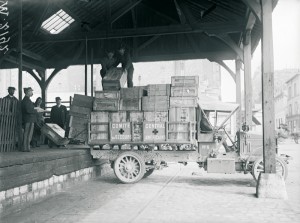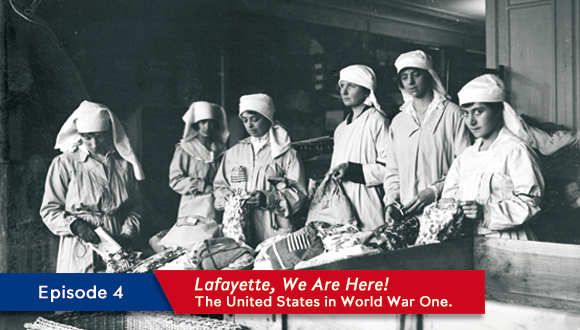
American Clearing Relief House camions leaving the Batignolles railway yard with medical supplies for hospitals, 21 June 1916. © Albert, Moreau/ECPAD/Défense

The Lycée Pasteur of Neuilly-sur-Seine transformed into a temporary hospital and serving as a base for the ambulance service, September 1915. © Nanterre, Bibliothèque de documentation internationale contemporaine
American Volunteers
American Charitable Work Mobilization started as early as 1914
As early as August 1914, Americans enthusiastically participated in the implementation of relief programs for managing donations, setting up sanitary structures and providing humanitarian relief networks to bring help to refugees, people living in occupied territories and prisoners of war. By 1915, 75 organizations were already registered in the United States and 49 in France where women and men alike provided services, often on a voluntary basis. As donations kept pouring in from all over the United States, Myron Timothy Herrick (1854-1929), ambassador to the United States in France, created the American Clearing House, a private enterprise designed for the processing and distribution of gifts and donations.
After handing the reins to newly appointed American ambassador William Graves Sharp (1859-1922), Myron Timothy Herrick returned to the United States where he opened a clearing house in New York City. At the same time, Jean Jules Jusserand (1855-1932), French Ambassador to the United States who had also received a great number of letters containing gift money created a French Committee that managed relief supplies and their distribution.
The Emotional Impact on the French
Though in fewer numbers given this war made warfare industrial, the American volunteers including writers and prominent personalities working for relief organizations or serving in foreign combat units saw their actions widely reported in the American press. The numerous articles published in the French media dedicated to the American volunteers who died on the field of Honour and those who died while serving in the American Ambulance Field Service had a great emotional impact of French public opinion.




Ajouter un commentaire